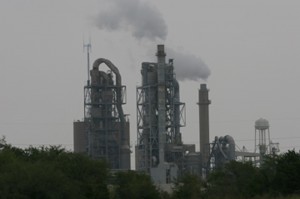Cook Children’s update last year of its 2008 study of children’s health found that asthma rates overall in a six-county area around Fort Worth have dropped from 18 to about 16.6 percent. That still puts this part of North Texas at the top of the Texas charts for asthma.
The rates increase steadily from younger to older children, peaking at about 24 percent, Tubb said. “The longer you live in the area, the greater your chances are for having an asthma attack,” he said. “That should tell you something.”

The changes weren’t uniform across the area. In 2012, the survey showed that 28 percent of African-American children have suffered from asthma; four years earlier the figure was 26 percent. And while rates went down in Denton, Tarrant, and Hood counties, they stayed the same in Johnson and Parker and actually increased in Wise County. Reasons for the variations weren’t clear, Tubb said.
If overall asthma rates have indeed dropped slightly, the Downwinders and their allies may have had something to do with it. The group has been fighting since the early 1990s to stop the burning of hazardous wastes at the TXI, Holcim, and Ash Grove cement plants south of the Metroplex — the largest concentration of cement plants in the country, according to the Downwinders’ website.
Since then, the number of kilns in operation has dropped from eight to six, with more expected to close in the next two years. Most have converted to the cleaner “dry” process, and fewer of them are burning hazardous wastes.
“It’s true, they are back to a kind of normal level of awful pollution as opposed to [emitting] tons of exotic stuff,” Schermbeck said. When Ash Grove replaces its last wet kiln with a “hyper-dry” version, the situation will be much better, he said. “That’s the last card to fall.”
Scientists also know more now about the effects of some forms of pollution, he said. “It’s a lot more insidious than people believed five or six years ago,” Schermbeck said. Evidence now shows that small particles of soot, in addition to their effects on respiratory systems, “can pass through the lung walls and into the circulatory system and to the brain and other organs,” he said. “You are going to see these studies coming down the line,” showing the effects of such particles.
Over the years, the Downwinders challenged permits, went to court, and kept looking for new ways to get the Midlothian industries to clean up. Under pressure from the group, Holcim added advanced pollution controls that cut their pollution in half. TXI, which used to run four wet kilns, now operates one relatively new dry kiln.
The Earthjustice environmental law group sued to force the EPA to enforce Clean Air Act standards against cement plants. Three years ago, in response to that suit, the EPA finally set standards for cement kiln pollutants such as mercury and lead. Those were the regulations due to go into effect this year.
Now Schermbeck is afraid that some of that progress may be lost. The EPA in December not only delayed its tougher environmental rules for two years but also weakened the new regulations’ standards on particulate matter and reduced monitoring standards.
Beyond that, he points to what he called, in his Downwinders blog, a “fundamental shift in what’s being burned” in such plants. Nationwide, he wrote, cement kilns are seeking permits to burn more municipal and industrial garbage, including plastics. The EPA’s new rules, when they finally go into effect, could help control the effects of that shift in fuel, Schermbeck said.
********
The Cook Children’s health surveys don’t get into what causes childhood asthma. “We don’t have the right kind of data to support that relationship,” Tubb said. “But the bottom line is, we all have to believe that clean air would help.”
He pointed out that asthma disrupts kids’ education and limits their participation in sports, costs school districts money, and costs parents time away from work. “One of the sad things is that sometimes there’s no job when they get back,” he said.
Many people in North Texas have been working for years to try to deal with the asthma onslaught, he said. Cook Children’s has a pulmonology clinic for kids whose respiratory problems are difficult to diagnose. Another Cook clinic, called the Morris Foundation Center for Innovation in Children’s Health, functions as a “medical home” for families whose kids have asthma, in part to “keep kids out of the E.R,” Tubb said.
Cindy Parsons is director of health services for the Keller school district, which has won awards from the EPA for its work on improving indoor air quality on its campuses. Among other efforts, her district devised a strategic plan for addressing asthma issues, including training for nurses and other employees, and created a website for parents and kids.
“We know kids with asthma have a higher percentage of absenteeism,” she said. “It’s very widespread.” About 10 percent of Keller students are affected, she said.
At the University of North Texas Health Science Center, Dr. David Sterling is working on a proposal to help school districts deal with asthmatic students.
Richard Kurz, dean of UNTHSC’s School of Public Health, said Sterling is looking for funding to help schools take such measures as creating asthma action plans for students, with standing orders on file from physicians and direction from parents about what to do when a child has an asthma attack.
“Schools have an incentive because this is a major problem,” one that hurts students’ performance and costs districts money each time a student misses school, Kurz said. “Asthma is the leading chronic illness for children in this area.”
Tubb said the toll that asthma is taking in North Texas is a serious one.
“This isn’t 20 kids with some rare disease,” he said. “This is 115,000 kids. It’s become systemic in our culture.”












I found this article just as I’m getting ready to go pick up my son’s nebulizer refill. Thank you for not letting up on polluters.